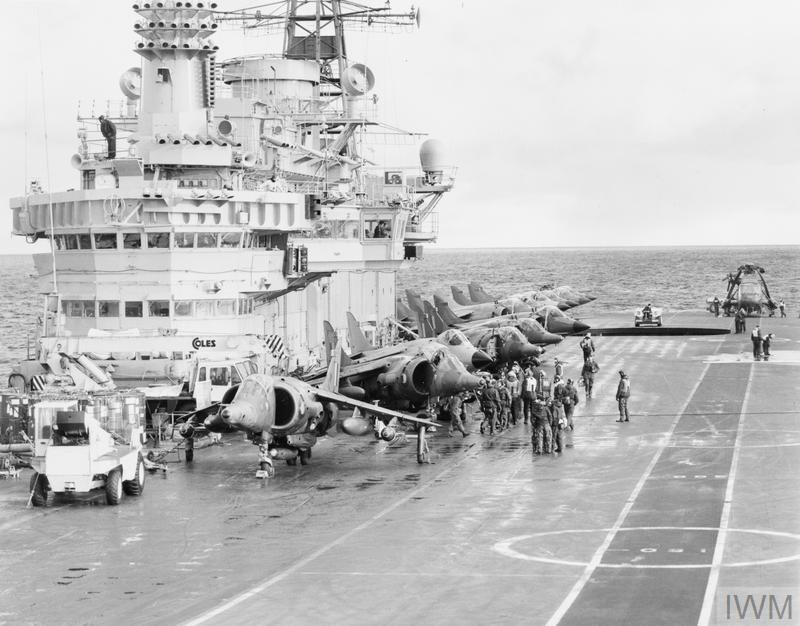Assault ship HMS Fearless arrived off Ascension early in the morning of Saturday 17 April 1982, having steamed on ahead of other ships of the Amphibious Group.
Also arriving on the island, though on this occasion by air, were Admiral Sir John Fieldhouse, Commander in Chief Fleet, and Maj Gen Jeremy Moore, Land Forces Commander, who met Admiral Woodward, the Commander of the Battle Group, Brig Julian Thompson, Commander 3 Cdo Bde, and Commodore Amphibious Warfare Mike Clapp aboard HMS Hermes.
The visiting VIPs flew back to the UK again the same evening, taking with them the outline of a plan; the Carrier Battle Group would press on, while the Amphibious Group would spend around ten days off Ascension, repositioning stores and equipment and putting in some strenuous training, which kept the slower ships out of harm’s way for longer and meant they were ready to mount an amphibious assault as soon as they reached the Falklands.
Ripples from the British logistical effort were spreading ever wider, reaching as far as the Pacific coast of South America.
Replenishment tanker RFA Tidepool had arrived in the northern Chilean port of Arica on 4 April, ready to be handed over to the country’s navy, when the requirement for more tanker and store ship capacity on Operation Corporate led to a request for the UK to ‘borrow back’ the ship for a short period.
With the arrangement agreed, Tidepool, a 27,500-ton Improved Tide-class ship built on the Tyne in the early 1960s, was sailed north by a mixed Chilean and British crew.
She made her transit of the Panama Canal under cover of darkness and sailed on to Curacao in the Caribbean, arriving at the capital of Willemstad on 14 April.
She filled her tanks and loaded stores, and offloaded six containers of personal effects owned by her intended Chilean crew, and on 15 April around 40 extra RFA crew flew into Curacao from the UK.
Now fully recrewed as an RFA ship once more, the tanker sailed from Curacao on Saturday 17 April, bound for Ascension Island.
* These posts can only give a brief sense of what was a complex and fast-moving situation 40 years ago, and cannot cover the involvement of every ship, squadron and unit in detail – for a much more comprehensive account see naval-history.net at https://www.naval-history.net/NAVAL1982FALKLANDS.htm
Today’s image, from the Imperial War Museum collection (© IWM FKD 453) shows the flight deck of aircraft carrier HMS Hermes featuring eight Sea Harriers and four RAF Harrier GR3s along with a Fleet Air Arm Sea King
